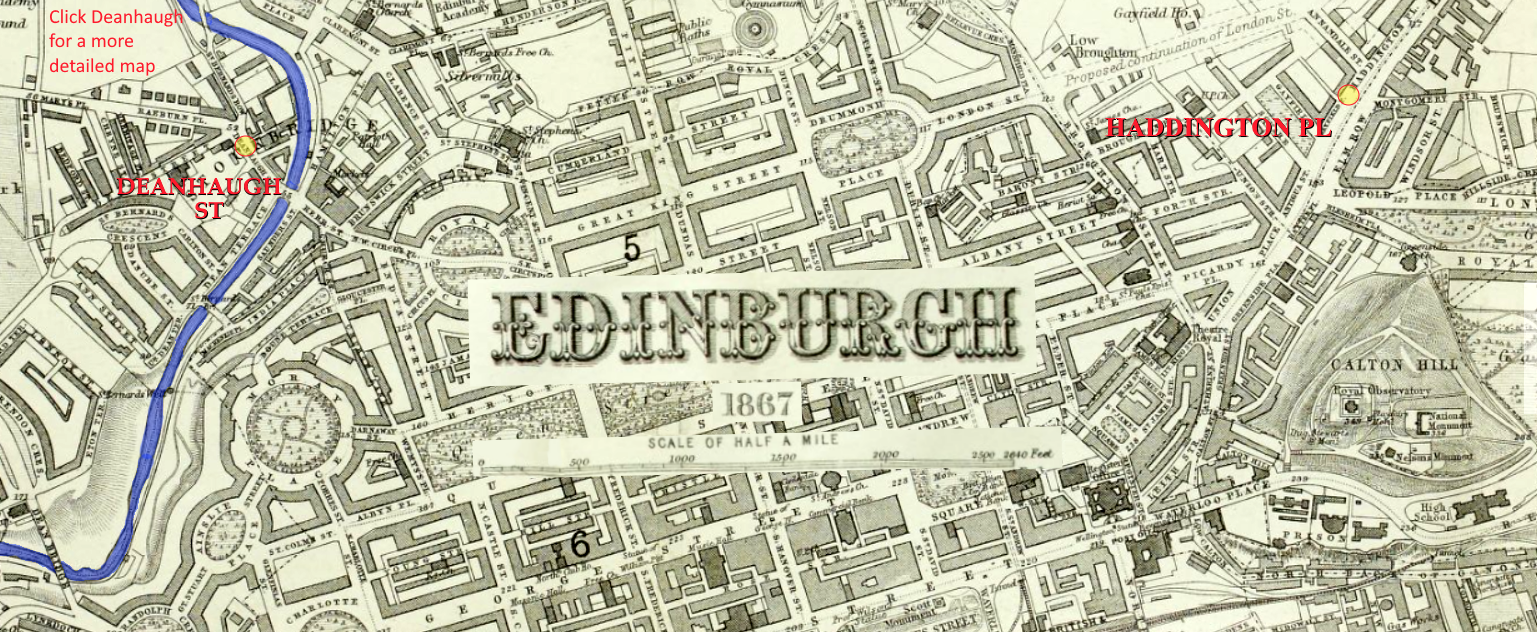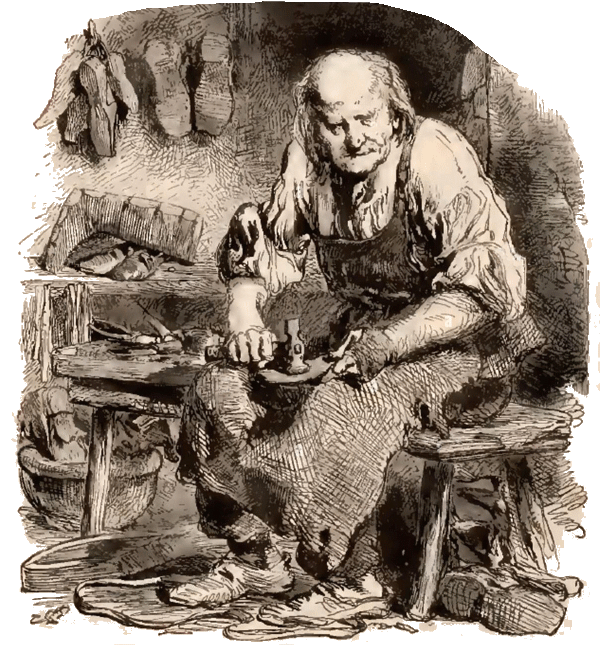|
The Tron Church, where Frederick Clark in 1852 married Mary Brannan, is a well-known landmark in the heart of Edinburgh, and they lived nearby. This church, though now a gift shop, is still located on High Street, which is perhaps more better known today as the Royal Mile, as it leads east from Edinburgh Castle to the Queen's residence at Holyrood Palace. No. 42 Blackfriars Wynd, where Frederick and Mary lived, is just east of the church, where the wynd leads south from its intersection with High Street. Because it was a wynd, it was too narrow back then to be called a street. As such, it does not appear in city directories of the day. This partly explains why Frederick and Mary are not in those directories. Another reason is that they were likely poor, with Frederick probably working for someone else, rather than in his own shop. Interestingly, one of the prominent Victorian boot and shoemaking firms of Old Edinburgh was Dykes & Co., which was located on High Street, at the head of Blackfriars Wynd. Frederick may very well have been employed there. The 1861 U.K. Census shows Frederick and family then residing at 10 Deanhaugh St., which was located northwest of Edinburgh Castle, at the Stockbridge on the west bank of the Water of Leith River. This address in the 1841 and 1851 Census had been the home and shop of boot and shoemaker John McLaren (c.1817-1884), and McLaren, though still residing at Deanhaugh, appears in the 1860-61 Electoral Register as "tenant and occupant" of a second boot and shoe shop at 1 Leslie Place, which was just around the corner from the Deanhaugh shop. McLaren's appearance in this Register means that he had the right to vote for members of parliament, a right that Frederick Clark apparently did not have. This leaves little doubt that Frederick was McLaren's employee. When Frederick makes his first appearance in the Edinburgh Postal Directory (1864-65 edition), he is now shown residing at the Leslie Place shop, presumably still in McLaren's employ, with McLaren remaining at Deanhaugh. However, the two men about 1867 switched locations, with Frederick moving back to Deanhaugh, and McLaren now moving to Leslie Place. Next, when Frederick makes his first appearance in the Electoral Register (1868-69 edition), he has moved up in status, as he is now shown as "tenant and occupant" of the Deanhaugh business. This means that Frederick, as had McLaren before him, was now entiitled to vote, a priviledge reserved in those days for owners of property and/or a business. We can surmise that starting about 1861 Frederick steadily worked his way up from an employee of McLaren's to being some sort of partner. The Deanhaugh Street, Leslie Place, West Haugh Street, Leggat's Land and Raeburn Place addresses in the preceding and following paragraphs are all within a few doors of each other in the Stockbridge district of Edinburgh, which in those days was very much on the outskirts of the city. Clicking the blue link that follows will show a detailed map of this area. The 1871 Census shows Frederick and family still residing at Leslie Place, but over the next few years they also resided and/or worked at 7 West Haugh Street and 6 Leggat's Land (between Deanhaugh and the Stockbridge), both of which were within a few doors of their earlier shops/homes at Deanhaugh Street and Leslie Place. John McLaren in this same census is shown at 1 Raeburn Place, which was just across a street intersection from the Deanhaugh shop. It would appear that Frederick and McLaren were no longer partners by this time, but this is not known for sure. Frederick then lived and worked for a couple of years at 1 Haddington Place, which was a mile or so east of the previous shops that he and McLaren had worked at in the Stockbridge area. This new address was in a more upscale part of the city near the Royal Observatory and monuments on Calton Hill. Then about 1875, or so, he moved his family to the St. Cuthbert's parish, which was just to the southwest of Edinburgh Castle. Here Frederick and family worked at 52 Morrison Steet, and resided in separate quarters next door at 53 Morrison. They evidently prospered, as by the time the 1880-81 edition of the Electoral Register was published, Frederick and a few of his neighbors were able to purchase the building they occupied on Morrison Street. This elevated their electoral status from "tenants and occupants" to "proprietors", and this new-found wealth was probably what enabled Frederick and his family in 1881 to emigrate to the United States.
Copyright © Michael S. Clark, Ph.D., 1998- - All rights reserved. |
 Scottish Homes
Scottish Homes 



